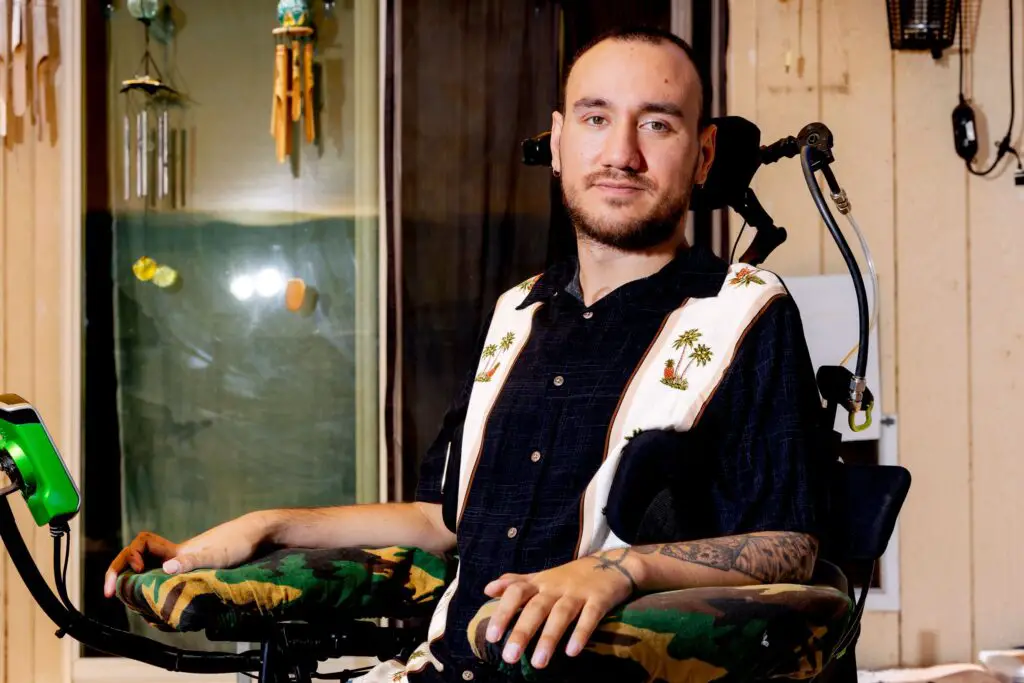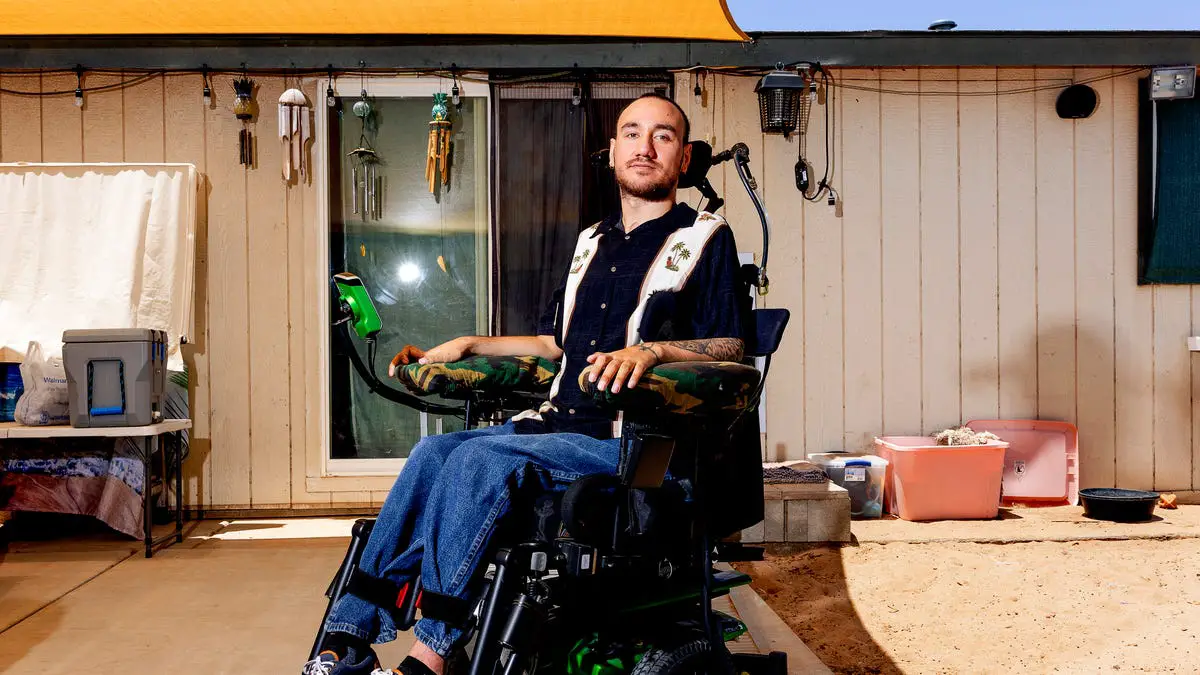In February 2024, the world witnessed a medical and technological milestone. Neuralink brain chip, Elon Musk’s ambitious brain computer interface (BCI), was successfully implanted in a human for the very first time.
That human was Noland Arbaugh, a Texas native who had been paralyzed from the shoulders down since a swimming accident in 2016. Now, 18 months later, Arbaugh says his entire life has changed.
His story is more than just about science it’s about human resilience, hope, and the future of technology. Before the Neuralink brain chip, Arbaugh lived with severe limitations. He could not move his arms or legs, and daily tasks depended entirely on caregivers.
But after a two hour surgery at the Barrow Neurological Institute in Phoenix, a robotic system implanted the chip in his brain, connecting ultra thin threads with over 1,000 electrodes to his neurons.
The results were astonishing. Using nothing but his thoughts, Arbaugh could operate a computer, browse the internet, play Mario Kart, control his television, and even turn household devices like his Dyson air purifier on and off.
For someone who had not moved independently in years, this was revolutionary. Arbaugh’s words at Neuralink’s all hands meeting, when he addressed employees with a smile and the phrase.
Hello, humans, captured the emotional weight of this breakthrough. He was no longer just a patient he was living proof that Elon Musk’s vision could redefine human machine interaction.
The Promise and Peril of BCIs
Medical experts believe the Neuralink brain chip represents a huge step toward restoring independence for people with paralysis and neurological conditions.
Dr. Rachael Levine, Neuroscientist at Johns Hopkins, notes, We’ve seen brain computer interfaces in experimental labs for years, but Neuralink’s achievement is integrating advanced AI with a wireless, compact device that can be used in everyday life.
This makes it not just science fiction, but a practical medical tool. Dr. Matthew Kerr, Neurologist at Barrow Neurological Institute, highlights the medical implications.
For patients with spinal cord injuries or ALS, regaining the ability to communicate or perform digital tasks independently can be life changing.
Neuralink is pushing the boundaries of neuroprosthetics in ways we couldn’t have imagined a decade ago. However, experts also caution about potential risks.
BCIs raise ethical questions about data privacy, long term health effects, and the possibility of dependency on commercial tech companies for essential bodily functions.
Other Advances in Brain-Computer Interfaces
While Arbaugh’s case is groundbreaking, he is not the only one benefitting from such technology. Across the world, similar research projects are changing lives.
BrainGate Consortium A 65 year old ALS patient in the US was able to communicate with family through a brain implant that translated her thoughts into text at a speed of 62 words per minute.
University of Melbourne Scientists helped a paralyzed man in Australia use a stentrode BCI to send emails and do online banking from home, improving his independence dramatically.
Synchron’s BCI Trials Patients implanted with stentrodes in clinical trials reported emotional improvements, as they felt less socially isolated when able to interact online again.
These examples show that while Neuralink is in the spotlight, the entire field of neurotechnology is moving forward rapidly.
Arbaugh’s success highlights what is possible when science, engineering, and patient determination intersect.
What sets Arbaugh’s story apart is not just the technology but his personal courage. After his 2016 accident, he described his life as feeling like a prisoner inside my own body.
His world shrank to relying on others for the simplest tasks sending a text, changing the TV channel, or browsing the internet. Today, he calls the Neuralink brain chip a second chance at freedom.
In interviews, Arbaugh expressed how regaining control over small things like choosing what to watch or playing games online restored his sense of dignity.
He also admits the journey hasn’t been easy. Early months involved intensive training sessions to teach the device how his brain signals translated into actions.
But he says every frustrating moment was worth it when he finally moved the cursor across a screen with nothing but thought.
His story resonates with millions living with paralysis, showing that technological breakthroughs are not abstract they can change lives in deeply personal ways.

The Broader Impact of Neuralink
The Neuralink brain chip is more than a medical device; it is part of a larger vision Musk has often described merging humans with artificial intelligence to keep pace with machines.
But even if full AI human symbiosis is years away, the short term applications are already profound. Medical Applications For spinal cord injuries, strokes, ALS, and neurodegenerative diseases, Neuralink could restore communication, mobility, and independence.
Rehabilitation Patients recovering from brain injuries may benefit from accelerated neuroplasticity through brain stimulation and digital feedback loops.
Everyday Life Integration Beyond medicine, BCIs may eventually let healthy individuals interact with digital devices seamlessly, eliminating keyboards, controllers, and screens.
Still, ethical debates loom large. Who owns the data coming from a brain chip? Can hacking become a risk? Will only wealthy patients initially benefit? These questions demand careful regulation as the technology matures.
Arbaugh’s experience reveals a truth often overlooked in futuristic discussions: at its heart, this is about human connection.
Technology gave him back the ability to play games with friends, communicate independently, and feel part of the world again.
As Arbaugh himself said in a candid moment, It’s not about controlling machines it’s about regaining a piece of myself I thought was gone forever.
That deeply human element is what makes this story so compelling. Behind the technical brilliance lies a man rediscovering freedom, joy, and self expression.
A New Era of Hope
Eighteen months after surgery, Arbaugh remains the living face of Neuralink’s possibilities. His journey with the Neuralink brain chip proves that what once sounded like science fiction is becoming reality.
While challenges remain ethical, medical, and social the breakthrough offers hope to millions living with paralysis worldwide. His smile, his humor, and his resilience remind us that technology is not just about machines; it’s about restoring human dignity.
As experts continue refining BCIs, Arbaugh’s story will be remembered as the spark that showed us what is possible when courage meets innovation.
The age of brain computer interfaces has begun, and for Noland Arbaugh, it has given him back a piece of his life.

